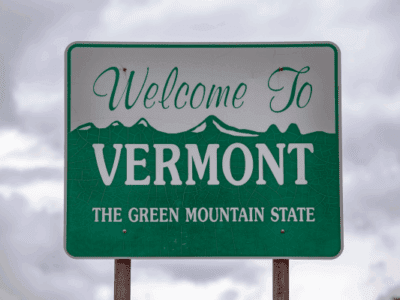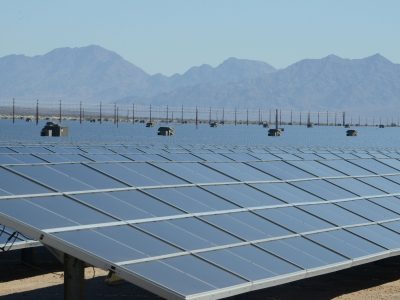Attack of the Dim Bulbs (A Dismayingly On-Going Series)
And the government would have banned Thomas Edison’s light bulb. Oh yeah, Obama’s regulators actually did just that.
That was Governor Romney on March 19. I hope he was more careful with the facts when he worked for Bain. If not, he would have cost lost a lot of money, not to mention the liability risks.
Here’s what the Washington Post fact-checker says about Romney’s statement:
It’s a cheap political shot for Romney to blame “Obama’s regulators” for a proposal that was signed into law by a Republican president and was broadly supported at the time. Moreover, we don’t see how higher efficiency standards translates into a “ban,” especially when light manufacturers have embraced the new standards.
Compact fluorescent lights (CFLs) have a number of features that make them convenient political symbols:
- CFLs provide a (literally) visible example of change, with different shape and illumination than conventional bulbs. Other regulations may be much more important targets, but it’s hard to visualize banking rules or health insurance requirements.
- CFLs appear to cost more (although they are actually cheaper in the end because of lower energy use). Ironically, the greatest strength of the regulation is also its greatest political weakness. One of the main reasons for the regulation is that people have trouble seeing that an immediate cash outlay pays for itself over time. People who have trouble making this tradeoff as consumers have the same difficulty making it as voters.
- Lighting is a feature of everyday life, encountered frequently by almost everyone. Thus, there are many reminders of the issue.
- CFLs replace a familiar object — one that has come to represent the era of American industrial strength and inventiveness. Thus Romney’s invocation of Thomas Edison.
- CFLs remind older Americans in particular that the world is changing in ways they may not like. No doubt there are some who suspect that CFLs are secretly manufactured in Kenya!
CFLs also illustrate why conservatives have given up on cost-benefit analysis. The economics strongly favor CFLs, which shows that cost-benefit analysis is an unreliable tool if your goal is to eliminate all government regulation, however well justified that regulation may be in particular cases.
Reader Comments
6 Replies to “Attack of the Dim Bulbs (A Dismayingly On-Going Series)”
Comments are closed.







All lighting has advantages.
None should be banned.
Yes, Republicans run up scare stories about CFLs,
but that does not mean they are wrong about the regulations themselves:
Those of us who are for energy savings,
can nonetheless see why light bulb regulations are wrong.
To begin with one should be clear about the token nature of the
regulations, wherever they are coming from:
On US Dept of Energy’s own stats and surveys, a fraction of 1% of US
energy is saved and around 1% of grid electricity
http://ceolas.net/#li171x
with much more relevant generation, grid and alternative consumption savings.
This also applies to supposed personal savings,
ie that ignores the power factor of common CFLs (twice the energy used
at the power plant to what your meter suggests), incandescent heat
benefit for most users, little or no savings with rarely used bulbs in
45-light households etc.
Conversely it ignores the rate rises and taxpayer compensation of
utilities with sales decrease expectation – not least in California
http://ceolas.net/#californiacfl
(continued)
All lighting has advantages.
None should be banned.
Yes, Republicans run up scare stories about CFLs,
but that does not mean they are wrong about the regulations themselves:
Those of us who are for energy savings,
can nonetheless see why light bulb regulations are wrong.
To begin with one should be clear about the token nature of the
regulations, wherever they are coming from:
On US Dept of Energy’s own stats and surveys, a fraction of 1% of US
energy is saved and around 1% of grid electricity
http://ceolas.net/#li171x
with much more relevant generation, grid and alternative consumption savings.
This also applies to supposed personal savings,
ie that ignores the power factor of common CFLs (twice the energy used
at the power plant to what your meter suggests), incandescent heat
benefit for most users, little or no savings with rarely used bulbs in
45-light households etc.
Conversely it ignores the rate rises and taxpayer compensation of
utilities with sales decrease expectation – not least in California
http://ceolas.net/#californiacfl
(continued)
(continued)
Besides,
while unnecessarily leaving lighting on = waste of energy.
the personal choice of what lighting to use = not waste of energy,
especially when freely paid for and there is no shortage, given many
future alternative (and environmentally friendly) sources.
(Of course if there was an electricity shortage, price rise would lead
to increased energy efficient purchases anyway, without regulations,
as with cars in the 1970’s)
A 13 point summary of the arguments used to defend light bulb
regulations, and reference reasons linked to official data why they
don’t hold up:
The
Deception behind banning Light Bulbs
(continued)
Besides,
while unnecessarily leaving lighting on = waste of energy.
the personal choice of what lighting to use = not waste of energy,
especially when freely paid for and there is no shortage, given many
future alternative (and environmentally friendly) sources.
(Of course if there was an electricity shortage, price rise would lead
to increased energy efficient purchases anyway, without regulations,
as with cars in the 1970’s)
A 13 point summary of the arguments used to defend light bulb
regulations, and reference reasons linked to official data why they
don’t hold up:
The
Deception behind banning Light Bulbs
(continued)
RE “Moreover, we don’t see how higher efficiency standards translates
into a “ban,” especially when light manufacturers have embraced the
new standards.”
1. Well, why did manufacturers welcome being told what they can or
can’t make and sell?
Would you or I as manufacturers welcome it?
If so, why?
The profit motive in their involvement is covered on
http://ceolas.net/#li12ax, with multiple references, including 2011 US
book “I Light Bulb” by MP Leahy and Howard Brandston, the latter
directly involved with the NEMA negotiators in the 2007 ban and
explaining what happened.
2. It is a “ban”,
not just because not allowing products that don’t meet certain standards obviously bans them,
but it is also effectively a ban on incandescent technology for ordinary use.
Phase 2 of EISA which follows after 2014 has 45 lumen per W as end regulation,
which no known incandescent can reach including touted 2012 halogens (typically 20-22 lumen per W).
Besides, the halogen replacements have different light quality etc and
cost much more for marginal savings, which is why neither consumers or
politicians like them (no “Halogen replacement programs” as with CFLs!)
Of course, given the profit motive by manufacturers seeking the ban,
they would be unlikely to work more on incandescents anyway (in the EU
the promised Philips Ecosaver halogen development was quietly shelved
once the ban was in place. Ban achieved = job done).
USA Standards and exceptions,
and 10 local state bills repealing federal light bulb laws
http://ceolas.net/#li01inx
(legislated Texas June 2011, South Carolina bill due for Gov Nikki Haley for signing)
(continued)
RE “Moreover, we don’t see how higher efficiency standards translates
into a “ban,” especially when light manufacturers have embraced the
new standards.”
1. Well, why did manufacturers welcome being told what they can or
can’t make and sell?
Would you or I as manufacturers welcome it?
If so, why?
The profit motive in their involvement is covered on
http://ceolas.net/#li12ax, with multiple references, including 2011 US
book “I Light Bulb” by MP Leahy and Howard Brandston, the latter
directly involved with the NEMA negotiators in the 2007 ban and
explaining what happened.
2. It is a “ban”,
not just because not allowing products that don’t meet certain standards obviously bans them,
but it is also effectively a ban on incandescent technology for ordinary use.
Phase 2 of EISA which follows after 2014 has 45 lumen per W as end regulation,
which no known incandescent can reach including touted 2012 halogens (typically 20-22 lumen per W).
Besides, the halogen replacements have different light quality etc and
cost much more for marginal savings, which is why neither consumers or
politicians like them (no “Halogen replacement programs” as with CFLs!)
Of course, given the profit motive by manufacturers seeking the ban,
they would be unlikely to work more on incandescents anyway (in the EU
the promised Philips Ecosaver halogen development was quietly shelved
once the ban was in place. Ban achieved = job done).
USA Standards and exceptions,
and 10 local state bills repealing federal light bulb laws
http://ceolas.net/#li01inx
(legislated Texas June 2011, South Carolina bill due for Gov Nikki Haley for signing)